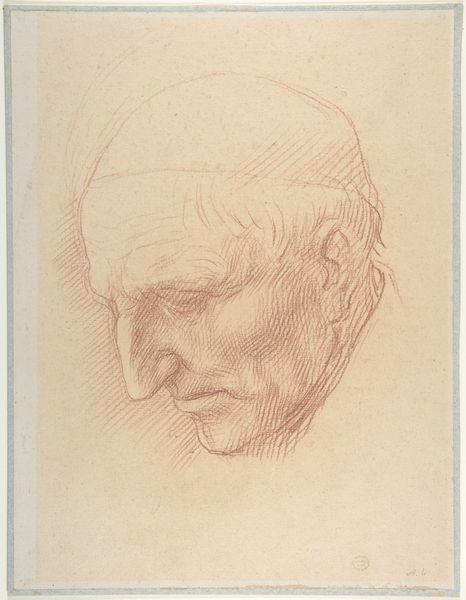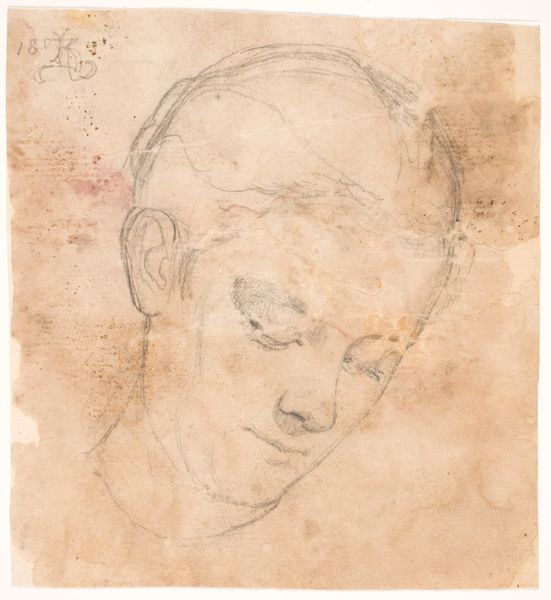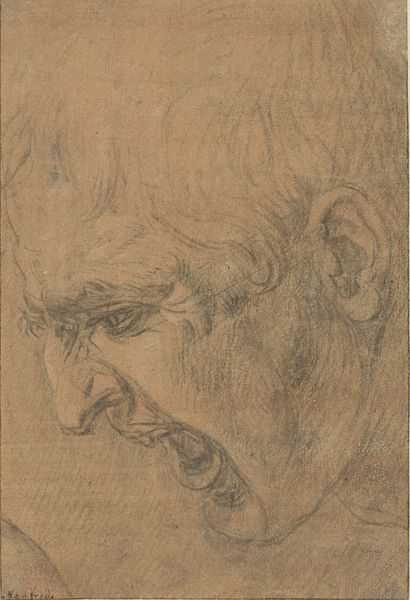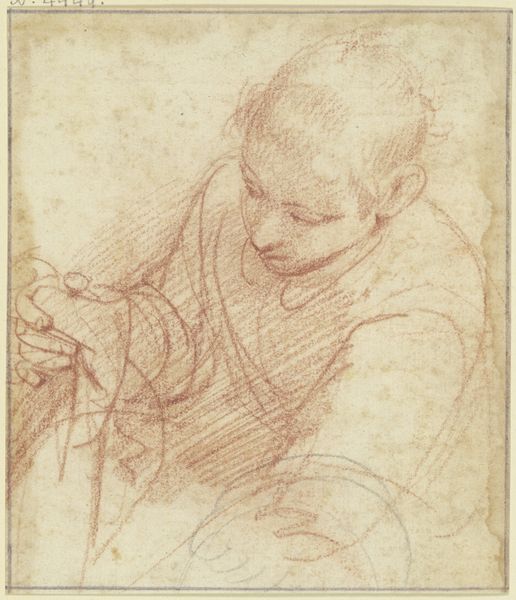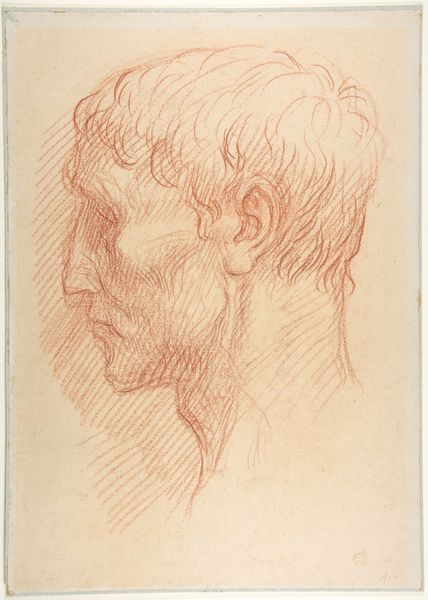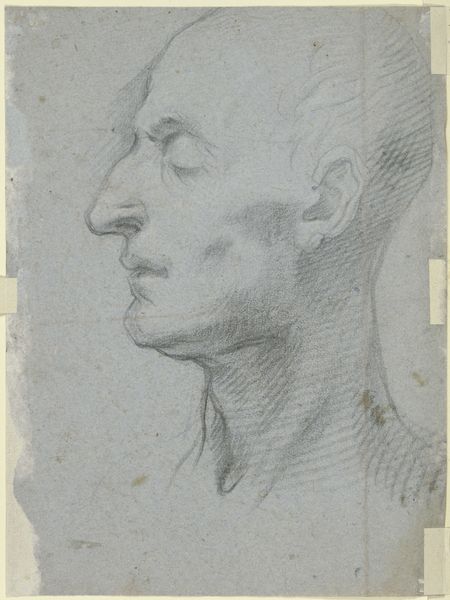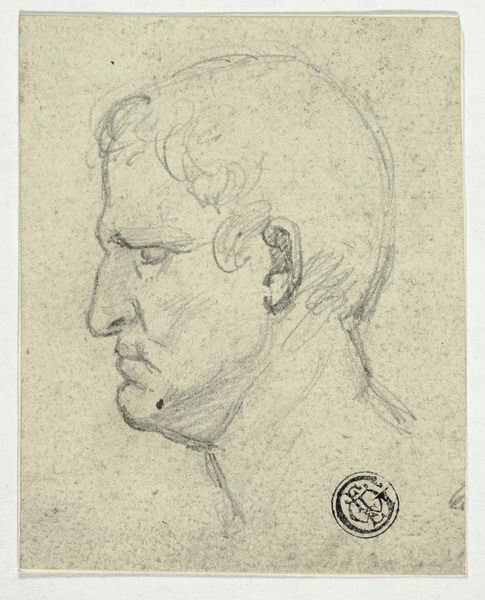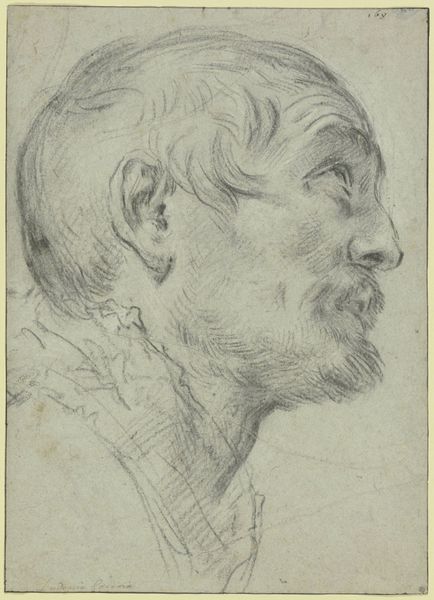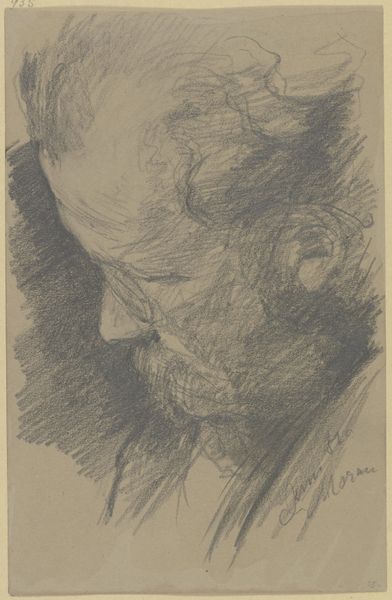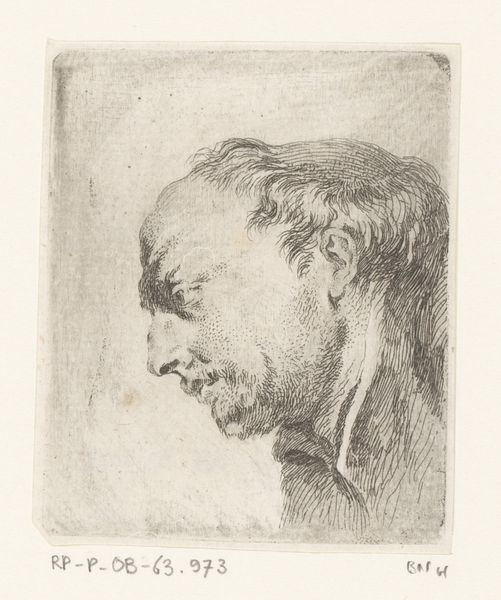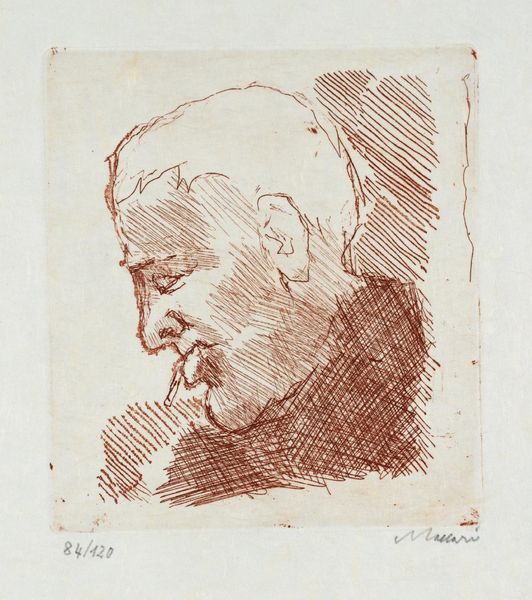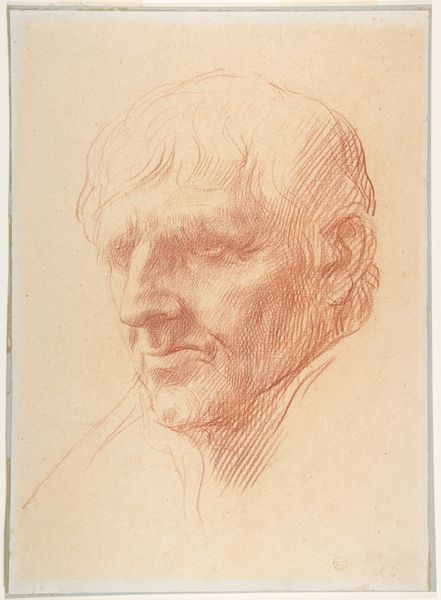
drawing, print, dry-media, graphite, charcoal
#
portrait
#
drawing
# print
#
charcoal drawing
#
11_renaissance
#
dry-media
#
portrait reference
#
pencil drawing
#
graphite
#
charcoal
#
italian-renaissance
Dimensions: 14- 5/8 x 10- 1/4 in. (37.1 x 26.0 cm)
Copyright: Public Domain
Curator: The piece before us is "Head of a Man," a charcoal drawing believed to have been created sometime between 1500 and 1600. It resides here at the Metropolitan Museum of Art. Editor: Intensely brooding. The sharp, descending lines create a real sense of weight, both physical and emotional. It's all downturned glances and heavy shading. Curator: Note how the artist utilizes hatching and cross-hatching techniques, especially to define the planes of the face. It lends a sculptural quality, doesn't it? Each stroke seems meticulously placed, serving to model the form and articulate its structure. Editor: The downcast eyes, the set jaw—classic symbols of Renaissance melancholy. Is he a representation of learnedness burdened by knowledge? Or simply reflecting the sober spirit of the age? Curator: That introspective gaze, quite right. The lack of idealization suggests a move toward a more human, relatable portrayal, which coincides with certain intellectual shifts occurring in Europe. It’s not about celebrating god-like perfection, but revealing internal truth. Editor: The shadow seems deliberate. The eyes are barely visible and it amplifies the mystery of who he is, the ambiguity becomes a mask of inner life and perhaps internal conflict. Curator: Indeed. I'm fascinated by how an anonymous artist manages to capture the complexities of the human condition. The visual language deployed evokes a spectrum of sensations, thought processes even. Editor: For me, the impact lies in its raw vulnerability—a timeless echo of human reflection cast in charcoal. Curator: An astute observation, capturing that dialogue between form and cultural resonance. Editor: Indeed, there is a constant renegotiation of these elements in all art that moves us, this piece no different.
Comments
No comments
Be the first to comment and join the conversation on the ultimate creative platform.
